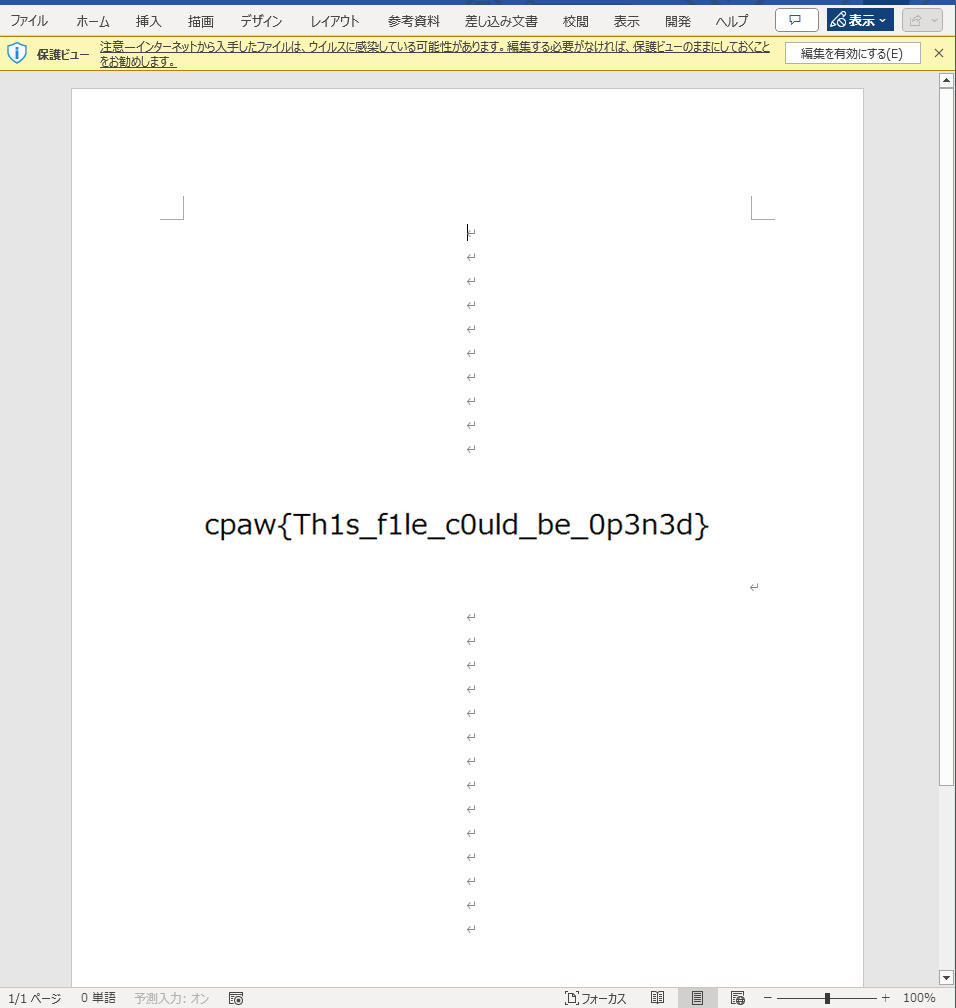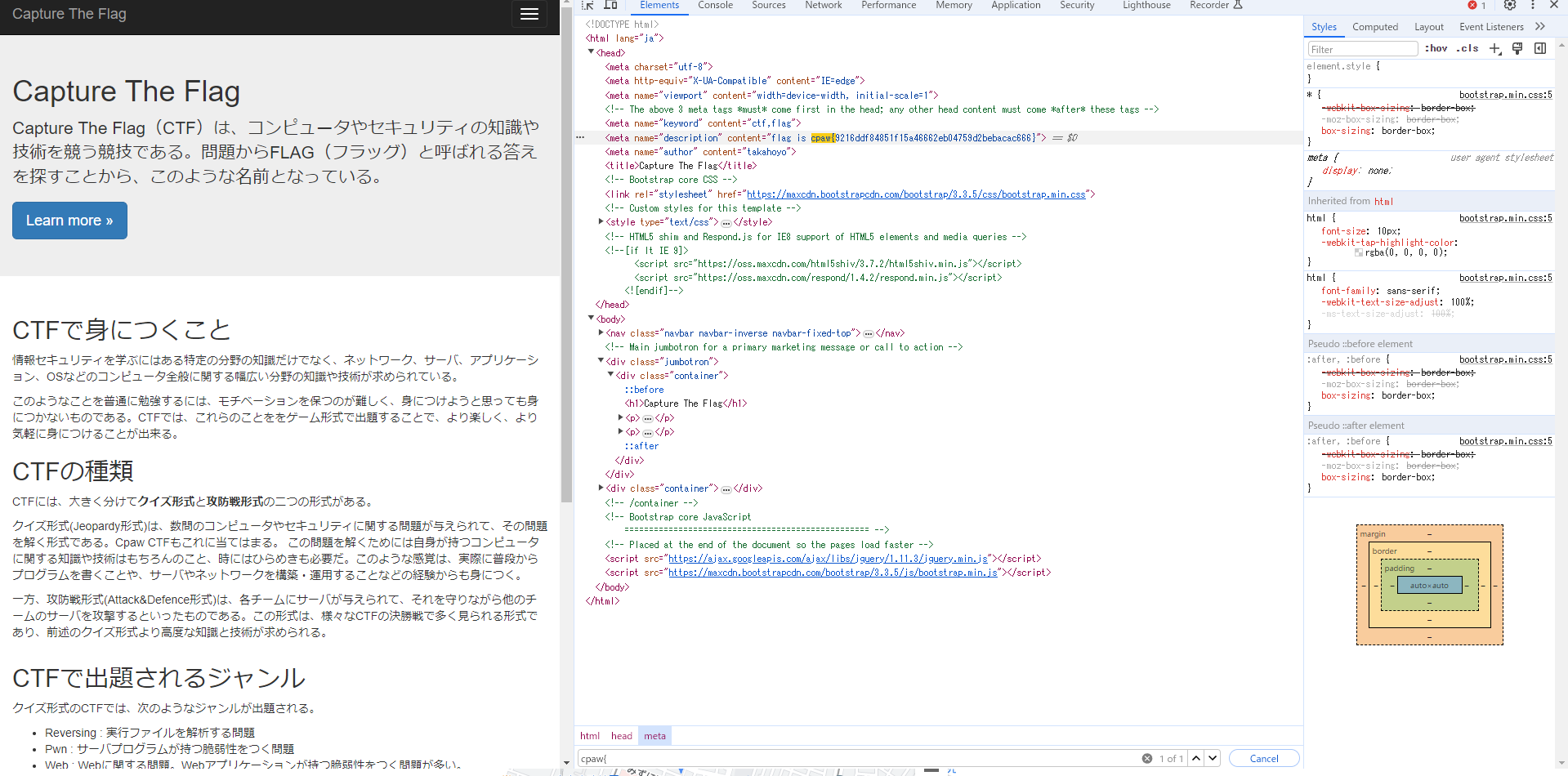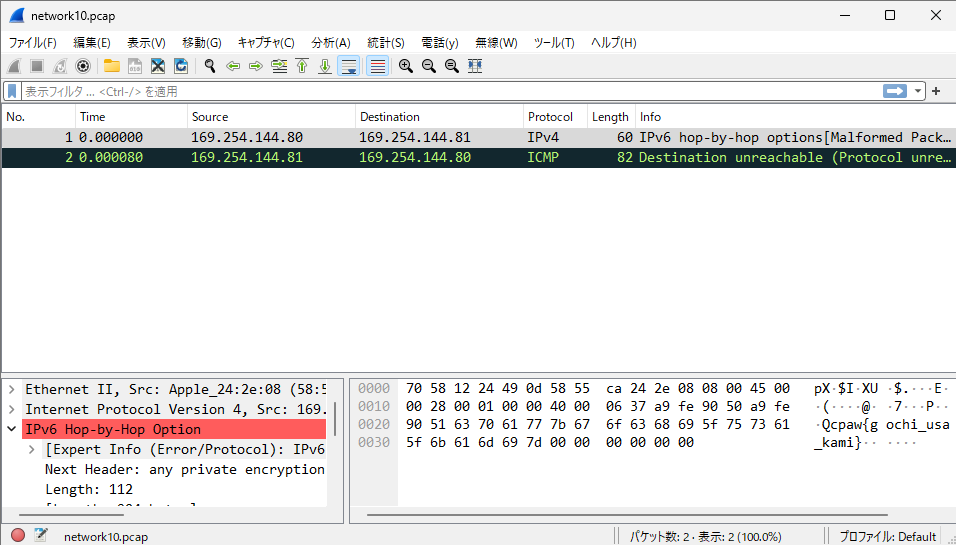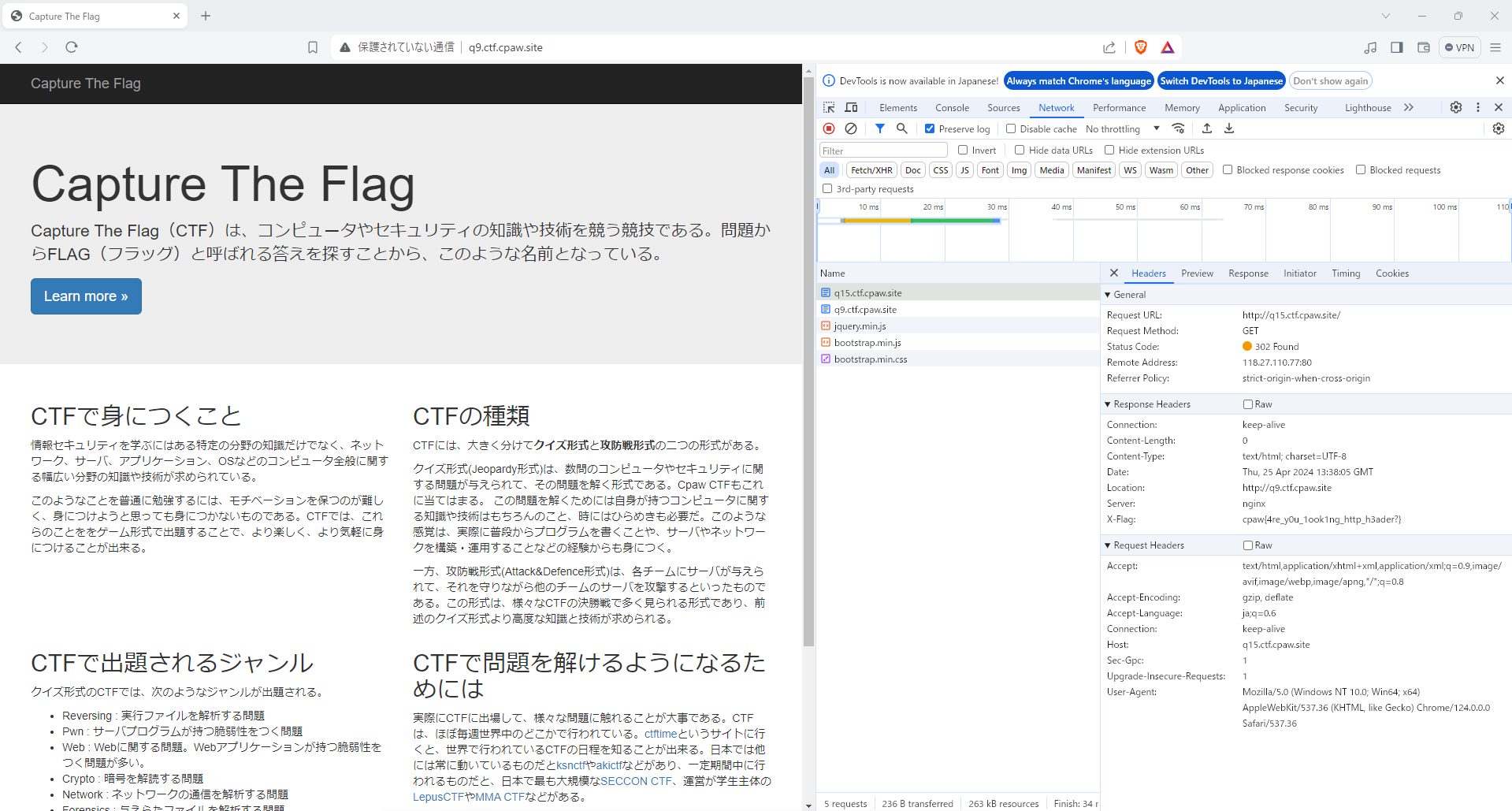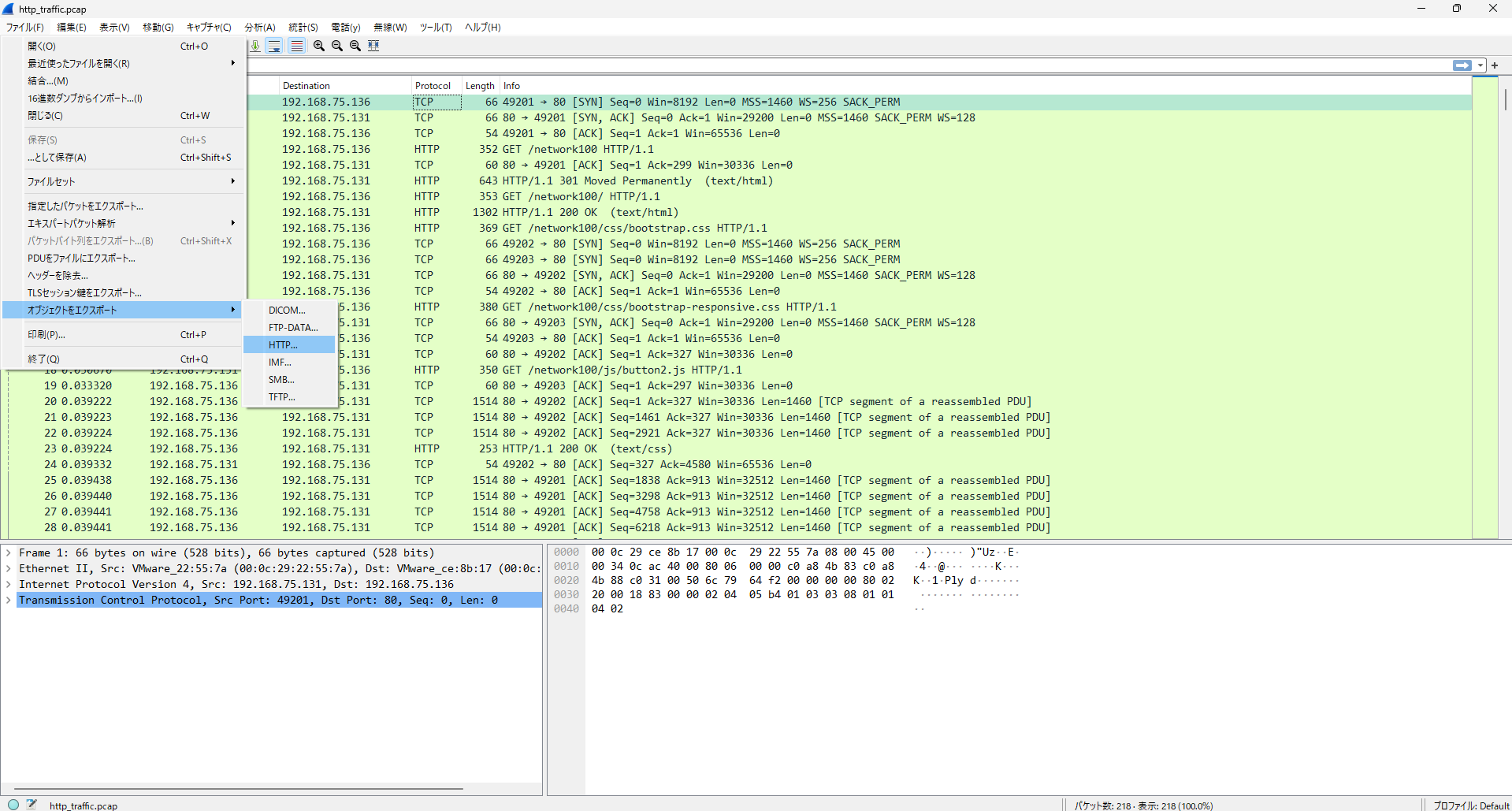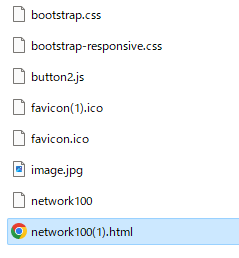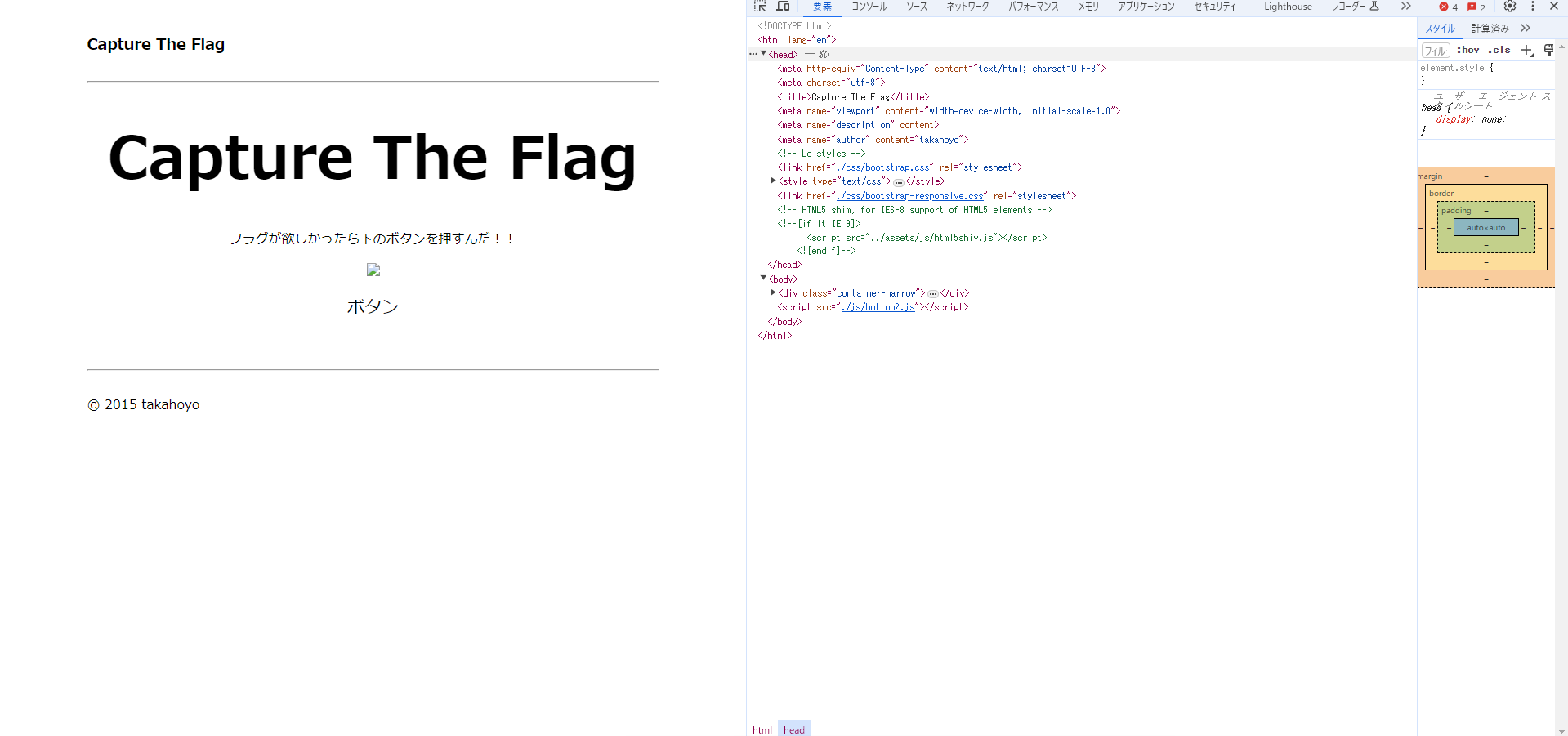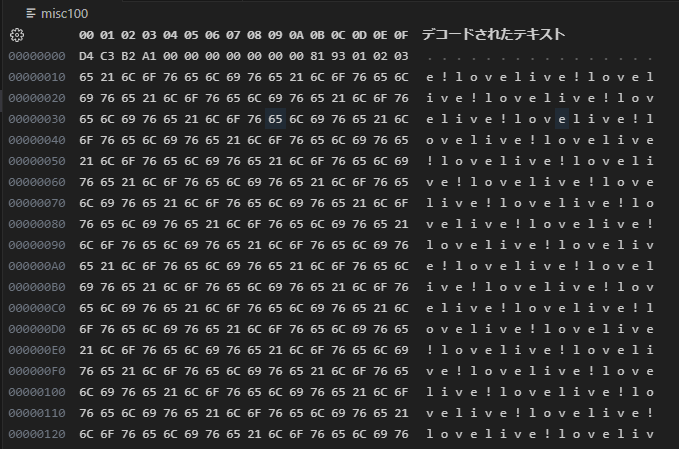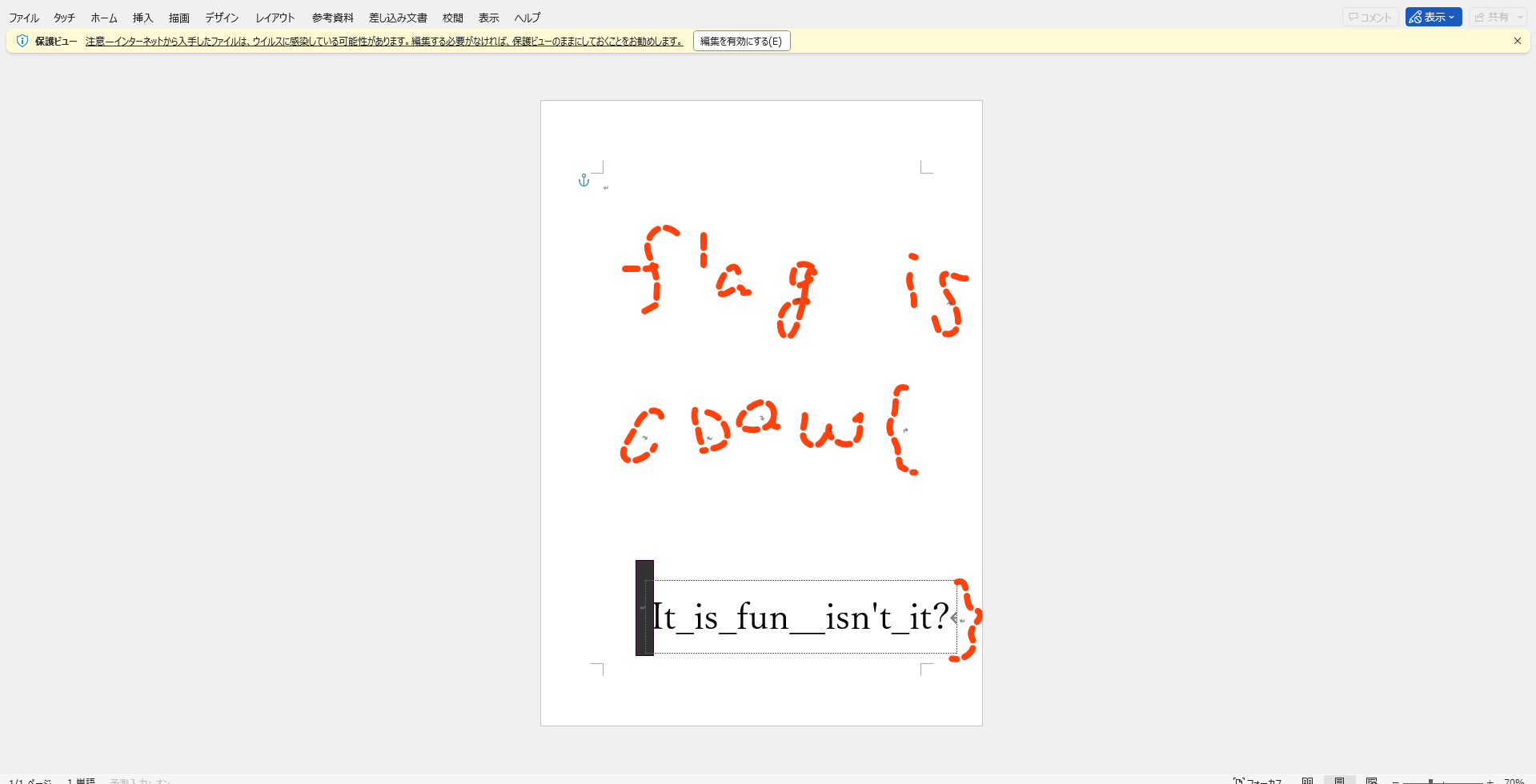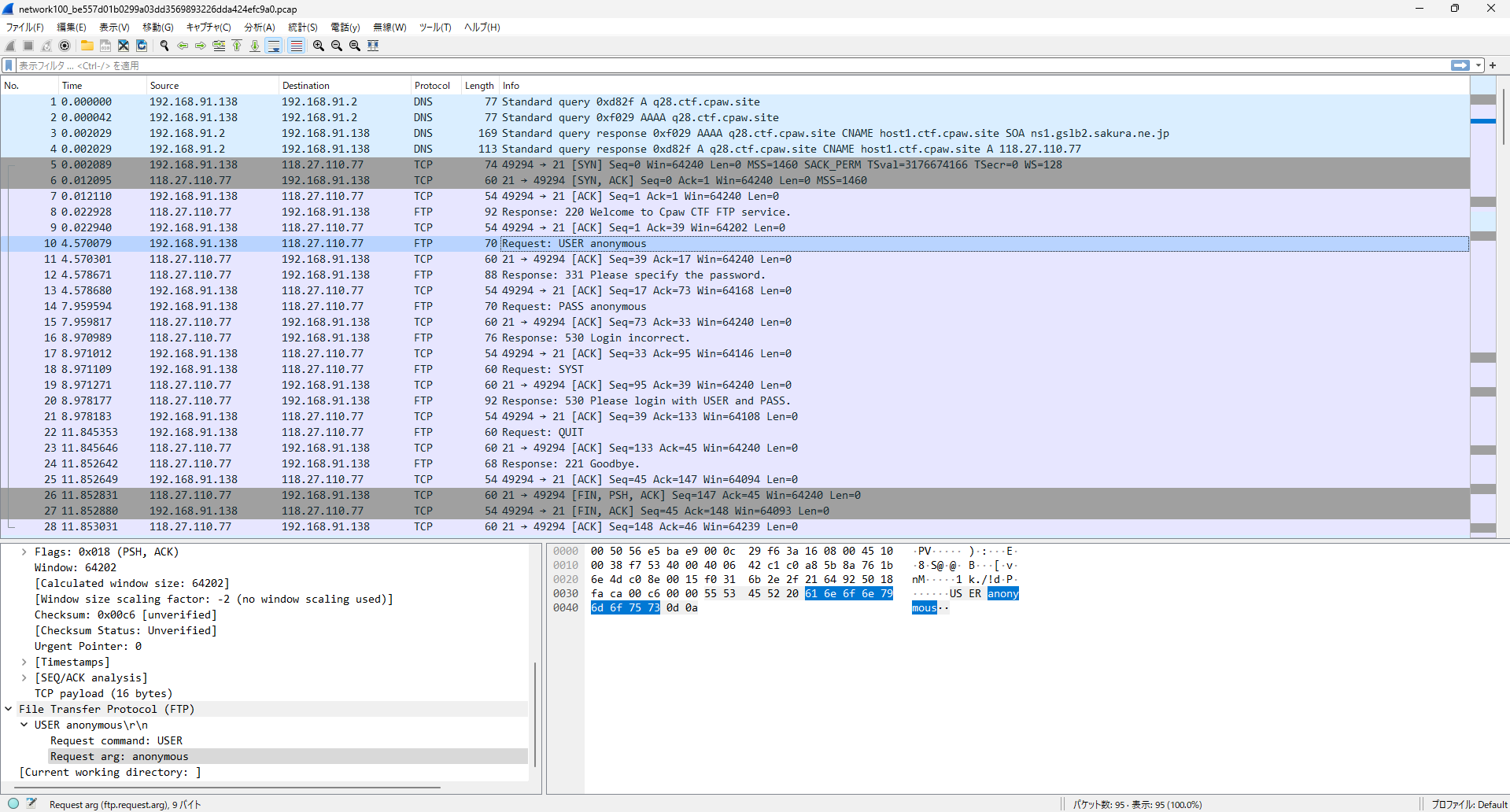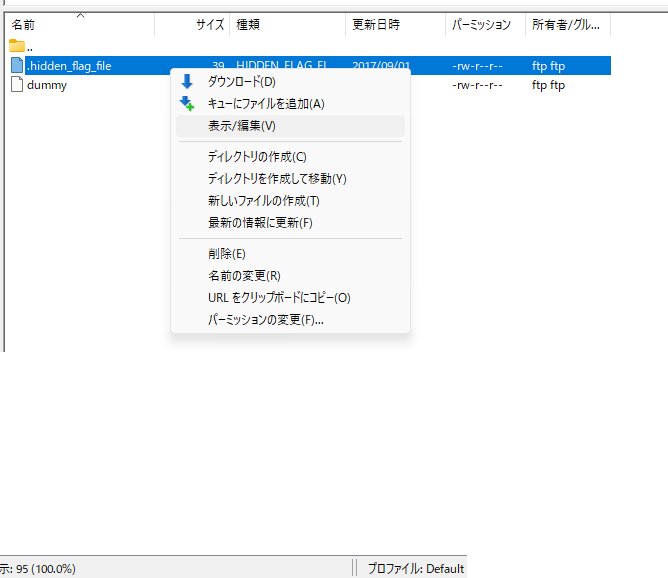はじめに
部内 CTF 初心者会用に作った CpawCTF Write Up です。
更新履歴
- 2024-05-26
- Q18 の見出しがh1になってたのを直しました。
- Q14 と Q26 のソースコードのインデントを調整しました。
- Q21 で バイナリを実行できないときの対処法を追加しました。
Level 1
Q1.[Misc] Test Problem
以下のフラグを提出すれば正解です。
cpaw{this_is_Cpaw_CTF}
Q6.[Crypto] Classical Cipher
シーザー暗号です。3文字面しただけなので、 -3 すれば解読できます。ASCII コード表を見たらわかりやすいと思います。
#include <stdio.h>
#include <string.h>
int main()
{
char flag[] = "fsdz{Fdhvdu_flskhu_lv_fodvvlfdo_flskhu}";
int n = strlen(flag);
for(int i = 0; i < n; i++){
if (('A' <= flag[i] && flag[i] <= 'Z')
|| ('a' <= flag[i] && flag[i] <= 'z')){
flag[i] -= 3;
}
}
printf("%s", flag);
}
フラグ
cpaw{Caesar_cipher_is_classical_cipher}
ここでアルファベットだけ選んでますが、シーザー暗号になってるのがアルファベットだけなので、これで問題ないです。
('A' <= flag[i] && flag[i] <= 'Z')
|| ('a' <= flag[i] && flag[i] <= 'z')
アルファベット以外もやるとこうなります。
cpawxCaesar\cipher\is\classical\cipherz
Q7.[Reversing] Can you execute ?
exec_me をダウンロードしてください。
はじめになんのバイナリファイルかを調べます。 file コマンドを使います。
file exec_me
こんなのが出てきます。
exec_me: ELF 64-bit LSB executable, x86-64, version 1 (SYSV), dynamically linked, interpreter /lib64/ld-linux-x86-64.so.2, for GNU/Linux 2.6.24, BuildID[sha1]=663a3e0e5a079fddd0de92474688cd6812d3b550, not stripped
ELF ファイルであることがわかりました。これは Linux の実行ファイルです。実行してみます。
./exec_me
出てきましたね。
フラグ
cpaw{Do_you_know_ELF_file?}
Q8.[Misc] Can you open this file ?
file コマンドを使います。
file open_me
open_me: Composite Document File V2 Document, Little Endian, Os: Windows, Version 10.0, Code page: 932, Author: v, Template: Normal.dotm, Last Saved By: v, Revision Number: 1, Name of Creating Application: Microsoft Office Word, Total Editing Time: 28:00, Create Time/Date: Mon Oct 12 04:27:00 2015, Last Saved Time/Date: Mon Oct 12 04:55:00 2015, Number of Pages: 1, Number of Words: 3, Number of Characters: 23, Security: 0
Document ファイルのようです。 Name of Creating Application: Microsoft Office Word って書いてあるのでこのファイルは Word で作られたようです。
Word で開いてみましょう。
Q9.[Web] HTML Page
ページを開きましょう。右クリックか、 F12 を押して開発者ツールを開いてください。
ctr+F を押してページエレメントを cpaw{ で検索すると出てきます。
Q10.[Forensics] River
写真のメタ情報を読む問題です。 こちらのサイトで読むことができます。
フラグ
甲突川(こうつきがわ)って言うらしい。
cpaw{koutsukigawa}
Q11.[Network]pcap
pcap はパケットキャプチャファイルです。 Wireshark などのツールで開くことができます。
Q12.[Crypto]HashHashHash
ハッシュ関数は、任意の長さのデータを固定長のデータに変換する関数です。ハッシュ関数は、同じデータに対しては必ず同じハッシュ値を返し、異なるデータに対しては異なるハッシュ値を返します。
今回は SHA-1 という種類のハッシュ関数です。
あるハッシュ値をググったりすると、ハッシュ値と元のデータのテーブルを持っているサイトが出てくるので、それを使って解読することができます。
Q14.[PPC]並べ替えろ
ソートするプログラムを書きましょう。
フラグ
#include <stdio.h>
#include <stdlib.h>
int cmpfunc(const void *a, const void *b)
{
return (*(int *)b - *(int *)a);
}
int main()
{
int ciphertext[] = {15, 1, 93, 52, 66, 31, 87, 0, 42, 77, 46, 24, 99, 10, 19, 36, 27, 4, 58, 76, 2, 81, 50, 102, 33, 94, 20, 14, 80, 82, 49, 41, 12, 143, 121, 7, 111, 100, 60, 55, 108, 34, 150, 103, 109, 130, 25, 54, 57, 159, 136, 110, 3, 167, 119, 72, 18, 151, 105, 171, 160, 144, 85, 201, 193, 188, 190, 146, 210, 211, 63, 207};
int n = sizeof(ciphertext) / sizeof(ciphertext[0]);
qsort(ciphertext, n, sizeof(int), cmpfunc);
for (int i = 0; i < n; i++)
{
printf("%d", ciphertext[i]);
}
return 0;
}
cpaw{2112102072011931901881711671601591511501461441431361301211191111101091081051031021009994938785828180777672666360585755545250494642413634333127252420191815141210743210}
Level 2
Q13.[Stego]隠されたフラグ
モールス信号です。こーゆうサイトを使うとできます。
フラグ
cpaw{hidden_message:)}
Q15.[Web] Redirect
http://q15.ctf.cpaw.site/ にアクセスすると http://q9.ctf.cpaw.site/ にリダイレクトされます。ブラウザの拡張機能で http://q15.ctf.cpaw.site/ にアクセスしたときの通信データを見てみましょう。 ログを保持 や Preserve log をオンにしてください。
Q16.[Network+Forensic]HTTP Traffic
WireShark で開いてみましょう。そして WireShark で通信してるファイルを復元します。ファイル → オブジェクトをエクスポート → HTTP で、すべて保存してください。
network100 ダミーか、、、
network100(1).html にして、ブラウザで開いてみましょう。
うまく表示されない、、、どうやら bootstrap.css と button2.js がそれぞれ css と js というフォルダの中にあるようです。フォルダを作って、それぞれのファイルを移動してください。
Q17.[Recon]Who am I ?
@porisuteru スペシャルフォース2 で検索してみましょう。
フラグ
cpaw{parock}
Q18.[Forensic]leaf in forest
pcap かと思ったら違いました、、、 先頭 16 byte 以降に lovelive! がいっぱい書かれています。たまに大文字や {} が入っています。なので、 16 byte 以降で A-Z と {} と _ だけを取り出します。
フラグ
#include <stdio.h>
#include <stdlib.h>
char buf[65565];
char result[65565];
int main()
{
const char path[] = "misc100";
int index = 0;
FILE *fp = fopen(path, "r");
fread(buf, 1, sizeof(buf), fp);
fclose(fp);
for (int i = 16; i < sizeof(buf); i++)
{
if ('A' <= buf[i] && buf[i] <= 'Z' || buf[i] == '{' || buf[i] == '}' || buf[i] == '_')
result[index++] = buf[i];
}
puts(result);
return 0;
}
cpaw{mgrep}
Q19.[Misc]Image
zip ファイルですが、解凍できません。 file コマンドで調べてみましょう。
misc100.zip: OpenDocument Drawing
どうやら OpenDocument Drawing というファイルのようです。 OpenDocument Drawing というのは Word で開くことができます。 Word などのファイルは実態が zip であることがよくあります。
Q20.[Crypto]Block Cipher
ソースコードを見た感じ、コンパイルして引数に暗号文とテキトーな数字を入れるとフラグが出てくるようです。
数字は 1 から順に入れていってみましょう。
フラグ
4 回目で出ました。
$ ./a.out ruoYced_ehpigniriks_i_llrg_stae 1
cpaw{ruoYced_ehpigniriks_i_llrg_stae}
$ ./a.out ruoYced_ehpigniriks_i_llrg_stae 2
cpaw{urYoec_dheipngriki_s_illgrs_ate}
$ ./a.out ruoYced_ehpigniriks_i_llrg_stae 3
cpaw{ourecYe_diphingkiri_sll__grats}
$ ./a.out ruoYced_ehpigniriks_i_llrg_stae 4
cpaw{Your_deciphering_skill_is_great}
cpaw{Your_deciphering_skill_is_great}
Q21.[Reversing]reversing easy
普通に実行すると cpaw{} だけが出てきます。
./rev100
cpaw{}
-bash: ./rev100: No such file or directory と出る場合
./rev100
-bash: ./rev100: No such file or directory
この rev100 というバイナリですが、 file コマンドを使ってみると、 32bit 用のバイナリであることがわかります。 そのため、 32bit 用の共有ライブラリがないと実行することができません。
file rev100
rev100: ELF 32-bit LSB executable, Intel 80386, version 1 (SYSV), dynamically linked, interpreter /lib/ld-linux.so.2, for GNU/Linux 2.6.24, BuildID[sha1]=f94360edd84a940de2b74007d4289705601d618d, not stripped
32bit 用の共有ライブラリ /lib/ld-linux.so.2 の有無は以下のコマンドで確認できます。
ls /lib/ld-linux.so.2
ls: cannot access '/lib/ld-linux.so.2': No such file or directory
/lib/ld-linux.so.2 は、以下のコマンドでインストールします。
sudo apt install lib32z1
これで実行できるようになります。
./rev100
cpaw{}
gdb を使って中のアセンブリを見てみます。以下のコマンドで起動します。
gdb rev100
main 関数のアセンブリを見てみます。
(gdb) disas main
Dump of assembler code for function main:
0x0804849d <+0>: push %ebp
0x0804849e <+1>: mov %esp,%ebp
0x080484a0 <+3>: and $0xfffffff0,%esp
0x080484a3 <+6>: sub $0x50,%esp
0x080484a6 <+9>: mov %gs:0x14,%eax
0x080484ac <+15>: mov %eax,0x4c(%esp)
0x080484b0 <+19>: xor %eax,%eax
0x080484b2 <+21>: movl $0x77617063,0x46(%esp)
0x080484ba <+29>: movw $0x7b,0x4a(%esp)
0x080484c1 <+36>: movl $0x79,0x20(%esp)
0x080484c9 <+44>: movl $0x61,0x24(%esp)
0x080484d1 <+52>: movl $0x6b,0x28(%esp)
0x080484d9 <+60>: movl $0x69,0x2c(%esp)
0x080484e1 <+68>: movl $0x6e,0x30(%esp)
0x080484e9 <+76>: movl $0x69,0x34(%esp)
0x080484f1 <+84>: movl $0x6b,0x38(%esp)
0x080484f9 <+92>: movl $0x75,0x3c(%esp)
0x08048501 <+100>: movl $0x21,0x40(%esp)
0x08048509 <+108>: movw $0xa7d,0x15(%esp)
0x08048510 <+115>: movb $0x0,0x17(%esp)
0x08048515 <+120>: movl $0x5,0x1c(%esp)
0x0804851d <+128>: lea 0x46(%esp),%eax
0x08048521 <+132>: mov %eax,0x4(%esp)
0x08048525 <+136>: movl $0x8048620,(%esp)
0x0804852c <+143>: call 0x8048350 <printf@plt>
0x08048531 <+148>: cmpl $0x5,0x1c(%esp)
0x08048536 <+153>: je 0x804855e <main+193>
0x08048538 <+155>: movl $0x0,0x18(%esp)
0x08048540 <+163>: jmp 0x8048557 <main+186>
0x08048542 <+165>: mov 0x18(%esp),%eax
0x08048546 <+169>: mov 0x20(%esp,%eax,4),%eax
0x0804854a <+173>: mov %eax,(%esp)
0x0804854d <+176>: call 0x8048390 <putchar@plt>
0x08048552 <+181>: addl $0x1,0x18(%esp)
0x08048557 <+186>: cmpl $0x8,0x18(%esp)
0x0804855c <+191>: jle 0x8048542 <main+165>
0x0804855e <+193>: lea 0x15(%esp),%eax
0x08048562 <+197>: mov %eax,0x4(%esp)
0x08048566 <+201>: movl $0x8048620,(%esp)
0x0804856d <+208>: call 0x8048350 <printf@plt>
0x08048572 <+213>: mov $0x0,%eax
0x08048577 <+218>: mov 0x4c(%esp),%edx
0x0804857b <+222>: xor %gs:0x14,%edx
0x08048582 <+229>: je 0x8048589 <main+236>
0x08048584 <+231>: call 0x8048360 <__stack_chk_fail@plt>
0x08048589 <+236>: leave
0x0804858a <+237>: ret
End of assembler dump.
0x080484b2 で 0x46(%esp) に $0x77617063 を代入しています。アスキーコード表を見ると wapc になります。 リトルエンディアンなので逆になっているので、 cpaw であることがわかります。 このことから 0x080484b2 から 0x08048515 で mov を使っているので、プラグのテキストを代入していると推測できます。
0x0804851d から 0x0804852c は printf を呼び出しています。
0x08048531 で 0x1c(%esp) と数字の 5 を比較して、 0x08048536 で等しければ 0x804855e にジャンプします。 0x1c(%esp) ですが、 0x08048515 で 5 を代入してから変更をしていないので、必ず 0x804855e にジャンプします。
0x0804855e から 0x0804856d は printf を呼び出しています。
0x08048572 以降は main 関数の終了処理です。
0x08048536 で必ずジャンプしてしまうため、 0x08048538 から 0x0804855c の間にフラグを出力する処理があると推測します。そのため、 0x08048531 を処理する直前に 0x1c(%esp) に 5 以外の数字を代入して、 0x08048536 でジャンプしないようにします。
0x08048531 にブレークポイントを刺します。
(gdb) break *0x08048531
r で実行します。
(gdb) r
0x08048531 で停止します。 disass でアセンブリを見て見ましょう。矢印で指しているところが今の命令です。
(gdb) disass
Dump of assembler code for function main:
0x0804849d <+0>: push %ebp
0x0804849e <+1>: mov %esp,%ebp
0x080484a0 <+3>: and $0xfffffff0,%esp
0x080484a3 <+6>: sub $0x50,%esp
***** 省略 *****
0x08048515 <+120>: movl $0x5,0x1c(%esp)
0x0804851d <+128>: lea 0x46(%esp),%eax
0x08048521 <+132>: mov %eax,0x4(%esp)
0x08048525 <+136>: movl $0x8048620,(%esp)
0x0804852c <+143>: call 0x8048350 <printf@plt>
=> 0x08048531 <+148>: cmpl $0x5,0x1c(%esp)
0x08048536 <+153>: je 0x804855e <main+193>
0x08048538 <+155>: movl $0x0,0x18(%esp)
0x08048540 <+163>: jmp 0x8048557 <main+186>
***** 省略 *****
0x1c(%esp) に 5 以外の数字を代入します。ここでは 0x1c(%esp) に 0 を代入します。
(gdb) p *(int*)($esp + 0x1c) = 0
c で続行します。
(gdb) c
フラグ
cpaw{yakiniku!}
Q22.[Web]Baby's SQLi - Stage 1-
palloc_home テーブルを表示する SQL を書きましょう。
select * from palloc_home;
フラグ
cpaw{palloc_escape_from_stage1;(}
Q28.[Network] Can you login?
Wireshark で開いてみましょう。
FTP 通信をしています。これはファイル転送プロトコルです。 FTP は暗号化せず、ユーザ名やパスワードが平文で送信されるため、セキュリティ上の問題があります。実際、 No.10 と No.14 のパケットを見ると、ユーザ名 anonymous とパスワード anonymous が平文で送信されています。しかし、 No.16 のパケットを見るとログインに失敗しているので、このユーザ名とパスワードは違うようです。 No.38 と No.42 のパケットを見ると、ユーザ名 cpaw_user とパスワード 5f4dcc3b5aa765d61d8327deb882cf99 が平文で送信されています。 これを使ってログインしてみましょう。
FTP では、 FTP クライアントが必要です。 FileZilla などを使ってログインしてみましょう。
ホスト (接続先) ははじめに DNS に問い合わせしている q28.ctf.cpaw.site です。 ユーザ名は cpaw_user です。 パスワードは 5f4dcc3b5aa765d61d8327deb882cf99 です。接続したら、 上にある サーバー → 強制的に隠しファイルを表示 をクリックしてください。
.hidden_flag_file にフラグがあります。 ファイルを選択し、右クリックして表示してください。
フラグ
cpaw{f4p_sh0u1d_b3_us3d_in_3ncryp4i0n}
Level 3
Q23.[Reversing]またやらかした
普通に実行しても何も表示されませんでした。
gdb を使います。
gdb rev200
main 関数のアセンブリを見てみます。
Dump of assembler code for function main:
0x080483ed <+0>: push %ebp
0x080483ee <+1>: mov %esp,%ebp
0x080483f0 <+3>: push %edi
0x080483f1 <+4>: push %ebx
0x080483f2 <+5>: add $0xffffff80,%esp
0x080483f5 <+8>: movl $0x7a,-0x78(%ebp)
0x080483fc <+15>: movl $0x69,-0x74(%ebp)
0x08048403 <+22>: movl $0x78,-0x70(%ebp)
0x0804840a <+29>: movl $0x6e,-0x6c(%ebp)
0x08048411 <+36>: movl $0x62,-0x68(%ebp)
0x08048418 <+43>: movl $0x6f,-0x64(%ebp)
0x0804841f <+50>: movl $0x7c,-0x60(%ebp)
0x08048426 <+57>: movl $0x6b,-0x5c(%ebp)
0x0804842d <+64>: movl $0x77,-0x58(%ebp)
0x08048434 <+71>: movl $0x78,-0x54(%ebp)
0x0804843b <+78>: movl $0x74,-0x50(%ebp)
0x08048442 <+85>: movl $0x38,-0x4c(%ebp)
0x08048449 <+92>: movl $0x38,-0x48(%ebp)
0x08048450 <+99>: movl $0x64,-0x44(%ebp)
0x08048457 <+106>: movl $0x19,-0x7c(%ebp)
0x0804845e <+113>: lea -0x40(%ebp),%ebx
0x08048461 <+116>: mov $0x0,%eax
0x08048466 <+121>: mov $0xe,%edx
0x0804846b <+126>: mov %ebx,%edi
0x0804846d <+128>: mov %edx,%ecx
0x0804846f <+130>: rep stos %eax,%es:(%edi)
0x08048471 <+132>: movl $0x0,-0x80(%ebp)
0x08048478 <+139>: jmp 0x8048491 <main+164>
0x0804847a <+141>: mov -0x80(%ebp),%eax
0x0804847d <+144>: mov -0x78(%ebp,%eax,4),%eax
0x08048481 <+148>: xor -0x7c(%ebp),%eax
0x08048484 <+151>: mov %eax,%edx
0x08048486 <+153>: mov -0x80(%ebp),%eax
0x08048489 <+156>: mov %edx,-0x40(%ebp,%eax,4)
0x0804848d <+160>: addl $0x1,-0x80(%ebp)
0x08048491 <+164>: cmpl $0xd,-0x80(%ebp)
0x08048495 <+168>: jle 0x804847a <main+141>
0x08048497 <+170>: mov $0x0,%eax
0x0804849c <+175>: sub $0xffffff80,%esp
0x0804849f <+178>: pop %ebx
0x080484a0 <+179>: pop %edi
0x080484a1 <+180>: pop %ebp
0x080484a2 <+181>: ret
End of assembler dump.
0x080483f5 から 0x08048457 がフラグを代入していると推測できます。
0x08048497 にブレークポイントを刺して、 -0x78(%ebp) 以降のスタックの中身を見てみましょう。
(gdb) break *0x08048497
実行
(gdb) r
-0x78(%ebp) 以降のスタックの中身を 128 byte ほど表示します。
(gdb) x/128c $ebp - 0x78
(gdb) x/128c $ebp - 0x78
0xffffc800: 122 'z' 0 '\000' 0 '\000' 0 '\000' 105 'i' 0 '\000' 0 '\000' 0 '\000'
0xffffc808: 120 'x' 0 '\000' 0 '\000' 0 '\000' 110 'n' 0 '\000' 0 '\000' 0 '\000'
0xffffc810: 98 'b' 0 '\000' 0 '\000' 0 '\000' 111 'o' 0 '\000' 0 '\000' 0 '\000'
0xffffc818: 124 '|' 0 '\000' 0 '\000' 0 '\000' 107 'k' 0 '\000' 0 '\000' 0 '\000'
0xffffc820: 119 'w' 0 '\000' 0 '\000' 0 '\000' 120 'x' 0 '\000' 0 '\000' 0 '\000'
0xffffc828: 116 't' 0 '\000' 0 '\000' 0 '\000' 56 '8' 0 '\000' 0 '\000' 0 '\000'
0xffffc830: 56 '8' 0 '\000' 0 '\000' 0 '\000' 100 'd' 0 '\000' 0 '\000' 0 '\000'
0xffffc838: 99 'c' 0 '\000' 0 '\000' 0 '\000' 112 'p' 0 '\000' 0 '\000' 0 '\000'
0xffffc840: 97 'a' 0 '\000' 0 '\000' 0 '\000' 119 'w' 0 '\000' 0 '\000' 0 '\000'
0xffffc848: 123 '{' 0 '\000' 0 '\000' 0 '\000' 118 'v' 0 '\000' 0 '\000' 0 '\000'
0xffffc850: 101 'e' 0 '\000' 0 '\000' 0 '\000' 114 'r' 0 '\000' 0 '\000' 0 '\000'
0xffffc858: 110 'n' 0 '\000' 0 '\000' 0 '\000' 97 'a' 0 '\000' 0 '\000' 0 '\000'
0xffffc860: 109 'm' 0 '\000' 0 '\000' 0 '\000' 33 '!' 0 '\000' 0 '\000' 0 '\000'
0xffffc868: 33 '!' 0 '\000' 0 '\000' 0 '\000' 125 '}' 0 '\000' 0 '\000' 0 '\000'
0xffffc870: 0 '\000' -80 '\260' -6 '\372' -9 '\367' -128 '\200' -53 '\313' -1 '\377' -9 '\367'
0xffffc878: 32 ' ' -48 '\320' -1 '\377' -9 '\367' 25 '\031' 101 'e' -38 '\332' -9 '\367'
0xffffc838 以降に 4 byte ずつ cpaw{ が入ってるのが見えます。 文字列を int 型として扱っているのでしょう。
フラグ
cpaw{vernam!!}
Q24.[Web]Baby's SQLi - Stage 2-
sQL インジェクションの問題です。
select * from user_table where pass = '$pass'; という SQL であると推測します。
$pass が入力されたパスワードです。 ここで、パスワードに ' or 1 = 1 -- という文字列をいれると、 SQL は select * from user_table where pass = '' or 1 = 1 --'; となり、 1 = 1 は常に真なので、すべてのユーザが表示されます。 -- はコメントアウトの記号です。 ほかの条件があっても、 -- 以降はコメントとして見られるため、無視されます。
フラグ
cpaw{p@ll0c_1n_j@1l3:)}
Q26.[PPC]Remainder theorem
プログラムを書きましょう!
#include <stdio.h>
#include <stdlib.h>
int main()
{
unsigned long long x = 32134;
unsigned long long mod;
while (1)
{
if (x % 3438478 == 193127)
{
printf("%lld\n", x);
break;
}
x += 1584891;
if (x < 0)
{
printf("No solution\n");
break;
}
}
return 0;
}
フラグ
cpaw{35430270439}
Q29.[Crypto] Common World
hint.txt を見ると、同じ公開鍵で暗号化しています。 RSA 暗号で同じ公開鍵で暗号化すると Common Modulus Attack ができます。
def excgcd(a, b):
if(b != 0):
d, y, x = excgcd(b, a % b)
y -= (a // b) * x
return d, x, y
return a, 1, 0
def commonModulusAttack(N, e_1, c_1, e_2, c_2):
d, s_1, s_2 = excgcd(e_1, e_2)
return (pow(c_1, s_1 ,N) * pow(c_2, s_2,N)) % N
N = 236934049743116267137999082243372631809789567482083918717832642810097363305512293474568071369055296264199854438630820352634325357252399203160052660683745421710174826323192475870497319105418435646820494864987787286941817224659073497212768480618387152477878449603008187097148599534206055318807657902493850180695091646575878916531742076951110529004783428260456713315007812112632429296257313525506207087475539303737022587194108436132757979273391594299137176227924904126161234005321583720836733205639052615538054399452669637400105028428545751844036229657412844469034970807562336527158965779903175305550570647732255961850364080642984562893392375273054434538280546913977098212083374336482279710348958536764229803743404325258229707314844255917497531735251105389366176228741806064378293682890877558325834873371615135474627913981994123692172918524625407966731238257519603614744577
e_1 = 11
c_1 = 80265690974140286785447882525076768851800986505783169077080797677035805215248640465159446426193422263912423067392651719120282968933314718780685629466284745121303594495759721471318134122366715904
e_2 = 13
c_2 = 14451037575679461333658489727928902053807202350950440400755535465672646289383249206721118279217195146247129636809289035793102103248547070620691905918862697416910065303500798664102685376006097589955370023822867897020714767877873664
m = commonModulusAttack(N, e_1, c_1, e_2, c_2)
print(m)
フラグ
cpaw{424311244315114354}
